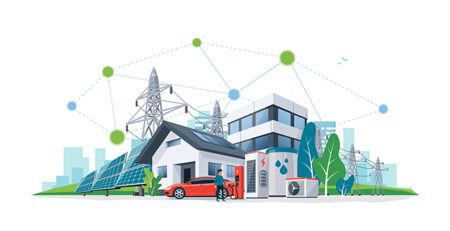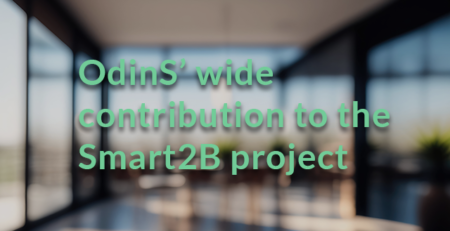Semantic modeling applications in smart buildings
As the world becomes increasingly interconnected and digitized, the concept of “smart buildings” is gaining traction to improve energy efficiency, reduce operational costs and enhance the overall occupant experience. Smart buildings often generate large amounts of data extrapolated from different systems and devices. Without a unified model for representing and analyzing this data, gaining insights and making informed decisions can be difficult.
Semantic modeling is the process of defining and representing the meaning of data, allowing computers to understand the relationships between different pieces of information. In the context of smart buildings, semantic modeling can be used to create a unified understanding of the various components and systems involved in building management, from Heating, Ventilation, and Air Conditioning (HVAC) and lighting to security and access control. Semantic models are usually represented in ontologies, and within the building domain, there are preexisting ontologies, such as the SAREF, SSN/SOSA, BrickSchema, BOT, and more.
The smart data model (https://smartdatamodels.org/) serves as an umbrella repository for collecting data models based on real-world use cases. They also incorporate the application of the New Generation Service Interface Linked Data (NGSI-LD) for building data models. The NGSI-LD emphasizes the need of providing a digital representation of real-life objects so that a computer can read and identify them with no ambiguity. The NGSI-LD is based on JSON-LD, which introduces the concept of the @context element to unambiguously identify each entity within a system by the location of its definition (URL/URN), aiming to interpret the data with more comprehension, clarity, and depth.
The smart data model constitutes of three critical components that must be present:
- the schema, which defines the technical data types and structure of the model
- a written document specifying the model for human comprehension
- examples of the payloads for NGSI-LD version
The Smart2B and SATO projects, members of the EU4BET project cluster, incorporate these smart data models to describe relevant entities for modeling buildings. One of the key benefits of semantic modeling in smart buildings is the ability to create a knowledge representation of the physical building that can be used to monitor and control its operation. Semantic modeling facilitates interoperability between building systems, enabling seamless communication and data exchange.
Machine learning, a subset of artificial intelligence, has been extensively used in smart buildings, particularly in predictive analysis for energy loads and building operations. Machine learning is a broad concept that uses statistical analysis to learn underlying patterns from data and predict future data points. Additionally, deep learning, a subset of machine learning, has gained significant attention in several research lines, including smart buildings. Deep learning uses neural networks consisting of layers of interconnected nodes that can learn to recognize patterns and make predictions based on input data. Although these machine-learning approaches have shown good prospects, the synergy between semantic modeling and machine learning has not been exploited in smart buildings.
The incorporation of semantic modeling in smart buildings is essential in facilitating the application of machine learning models. By creating a comprehensive and standardized representation of the building systems and their interconnections, semantic modeling enables efficient data collection and analysis for use in machine learning models. This modeling allows the dynamic adaptation of the building environment to infer context reasoning about the building and its systems to support services such as energy optimization, predictive maintenance, and decision-making.













